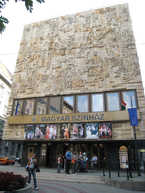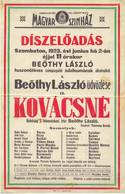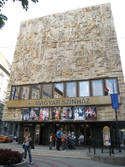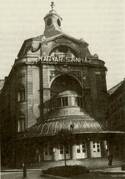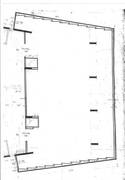Magyar Theatre
Budapest 1077 | |
| pokaż na mapie | http://www.magyarszinhaz.hu/ |
osoby
historia
Architectural description
The former Hungarian Theatre in Pest was designed by Adolf Lang (1848-1913) in 1897, and is situated in the 7th district on Hevesi Sándor Square. According to the opinion of theatre historian Bálint Magyar the excellent acoustics of the theatre can be thanked mainly to the narrow plot’s Prokrustes-bed than to the intention of the architect.
Entering the main entrance we arrive in the hall, where on either side can be found a wardrobe; above them is situated the staircase leading to the first floor. From the foyer we can get to the corridor of the ground floor auditorium; from here cloakrooms are opened. We also reach the horseshoe-shaped auditorium from here through the three side entrances.
The spacious side stages can be found in the back of both sides of the main stage. The revolving stage with a diameter of 11.66 meters was placed on the main stage. From the backside passage of the side stages elliptic stairs lead to the first level corridors.
From Wesselényi Street side behind the stage and the flyloft changing rooms and the service areas are situated. On the first floor above the foyer the buffet and the wardrobe are situated, to ensure easy access also for the audience sitting in the balcony. The management, the light and sound controls can be found behind the balcony on the second floor.
At this level, on the side of the main facade the Sinkovits Imre stage was placed. On the third floor there is the loft and various stores such as costumes, audio, furniture. Here room was made also for the academy run by the theatre. The dress maker’s room, the scenery stores, and the management offices can be found on the fourth level. The ventilation machinery and other management offices got place on the fifth floor.
History
The Magyar Theatre was built in 1897, in the traditional style of the 19th century, designed by Adolf Lang. As the private theatre of the Rákosi-Beöthy family the venue could seat 996, the performance of the festive opening event was the operetta titled Geishas by Sidney Jones, on 16th October 1987.
The theatre was rebuilt in 1914 following the plans of László Vágó. The venue, embellished and made more comfortable and spacious, was opened again on 26th December 1914 with a play by Imre Földes (A kapitányné).
The theatre lost its original name in 1951 when it became a venue belonging to the Madách Theatre. The company of the Madách played here until 1961, when they handed the building over to the Petőfi Theatre until its closing-down in 1964.
Between 1964-1966 an in-depth reconstruction of the Magyar Theatre was carried out, as a result of which an almost new building was born. The building designed by Sándor Azbej became the “temporary” residence of the National Theatre for almost forty years. The season-opening performance on 1st October 1966 was The Tragedy of Man by Imre Madách.
The theatre wore the name of National Theatre until September 2000, when the constructions of the new National Theatre were started on the Danube bank. From 2000 onwards the venue has been working as Pesti Magyar Színház and later as Magyar Színház until today. Next to the large theatre hall there is a studio hall as well, named after the actor Imre Sinkovits.
informacje dodatkowe
nie wprowadzono żadnych informacji
Dodaj informacje

